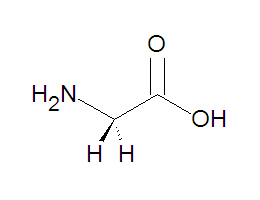Glycine: Difference between revisions
Jump to navigation
Jump to search

imported>David E. Volk (stub & picture) |
imported>Caesar Schinas m (Bot: Update image code) |
||
| (2 intermediate revisions by 2 users not shown) | |||
| Line 1: | Line 1: | ||
{{subpages}} | {{subpages}} | ||
{{Image|Glycine DEVolk.jpg|right|350px|Structure of glycine, the smallest amino acid.}} | |||
'''Glycine''' is the smallest of the twenty common [[amino acid]]s used by living organisms to build [[protein]]s. The ''[[side chain]]'', or ''[[residual group]]'' of glycine is a hydrogen atom. It is one of the non-polar amino acids. | '''Glycine''' is the smallest of the twenty common [[amino acid]]s used by living organisms to build [[protein]]s. The ''[[side chain]]'', or ''[[residual group]]'' of glycine is a hydrogen atom. It is one of the non-polar amino acids. | ||
==References== | |||
<references/> | |||
Latest revision as of 08:08, 8 June 2009
Glycine is the smallest of the twenty common amino acids used by living organisms to build proteins. The side chain, or residual group of glycine is a hydrogen atom. It is one of the non-polar amino acids.
